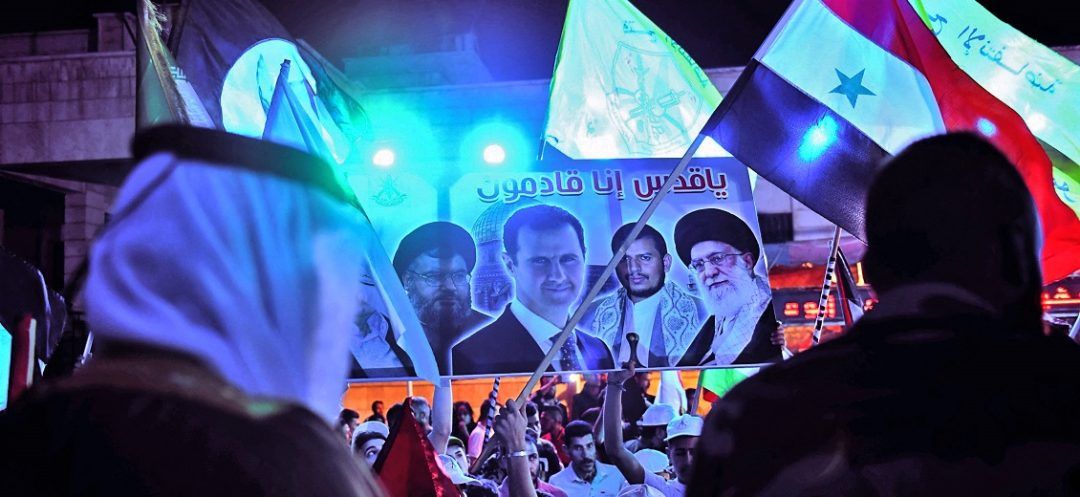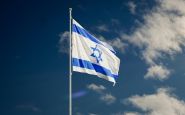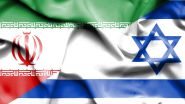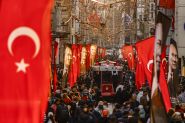- Home
- Middle East
- How Pro-Iranian Groups Occupy Syrian Territory

A redeployment in anticipation of a response expected to be particularly forceful. On Monday, Iranian-backed fighting forces in Syria were redeployed from the southwestern part of the country to the region of Bou Kamal, according to information obtained by This is Beirut from Rami Abdel Rahman, director of the Syrian Observatory for Human Rights (SOHR).
The day before, the London-based organization reported on its website that these groups had evacuated their previous positions. This redeployment comes in anticipation of a possible Israeli attack in response to the bombing of the town of Majdal Shams in the annexed Golan Heights last Saturday.
According to the SOHR, members of these groups and their leaders have been instructed to temporarily blend in with the local population.
Presence Throughout the Territory
This redeployment involves groups affiliated with Hezbollah based in the western Qalamoun region, as well as Syrian and non-Syrian formations originally stationed in Quneitra and, especially, in the southern suburbs of Damascus. The latter area, mainly, is a key stronghold for the Iranian axis in the region, mostly around the Sayyida Zaynab mausoleum.
This redeployment does not imply a complete evacuation of all positions in areas controlled by Bashar al-Assad’s government. Iranian proxies continue to be heavily present throughout Syrian territory, a result of the mullahs' regime’s extended involvement in the civil war that has ravaged the country since 2011.
It is important to specify that the training of these militias is conducted by the al-Quds Force of the Islamic Revolutionary Guard Corps (IRGC), Tehran’s military arm overseas. This specific force is consistently backed by Hezbollah.
According to a well-informed source who spoke anonymously to This is Beirut, members of Hassan Nasrallah’s group and the IRGC are “mainly stationed in the Damascus countryside and the southern suburbs of the Syrian capital,” including Sayyida Zaynab. The source added "they are also present in the western part of the Homs countryside, especially in Qusayr, as well as in the western and southern areas of the Aleppo countryside."
Control of the Syrian-Iraqi Border
However, these military formations are not confined to western Syria. In the Deir Ezzor governorate near the Iraqi border, they share control of the area with their Iraqi allies, as told by the same source.
The members of these groups are largely driven by financial incentives, given the severe economic and living conditions in Syria, says Abdel Rahman. Bou Kamal, the redeployment site mentioned earlier, is located in the portion of the governorate which is technically under Syrian regime control.
As for the western part of the country, the pro-Iranian presence is primarily represented by Hezbollah due to the proximity to the Lebanese-Syrian border. The border area is notably dotted with weapon caches belonging to Hassan Nasrallah’s group. Although “Hezbollah has removed its flags and banners from its positions" in the region, says Abdel Rahman, "these positions are still well-known, especially to Israeli intelligence services."
Afghan and Pakistani Fighters
Further south, around Quneitra and Daraa, near the annexed Golan Heights, Hezbollah also leads the operations in the region. According to Abdel Rahman, "pro-Iranian elite fighters from Afghanistan, Pakistan, and Iraq are deployed" locally under the command of Hassan Nasrallah’s group.
Here, the director of the SOHR refers to the Fatemiyyoun and Zaynabiyyoun brigades, whose members are recruited from Afghan and Pakistani Shiite minorities. However, once again, although they operate covertly, "Israeli intelligence services are fully aware of their presence and positions," he adds.
Indeed, the frequent strikes carried out by Israel in southwestern Syria are a clear indication of that. "The Lebanese-Syrian border and the southern suburbs of Damascus are prime targets for the Israelis, and this is where they can deal a significant blow to Hezbollah," explains Abdel Rahman.
According to several Israeli media outlets, the targets presented by the Israeli military to political decision-makers for a potential response on Lebanese territory—following the Hezbollah bombing of Majdal Shams—are all of a "military" nature. This suggests that the scope of their actions could easily be extended to the neighboring western part of Syria if necessary.
The day before, the London-based organization reported on its website that these groups had evacuated their previous positions. This redeployment comes in anticipation of a possible Israeli attack in response to the bombing of the town of Majdal Shams in the annexed Golan Heights last Saturday.
According to the SOHR, members of these groups and their leaders have been instructed to temporarily blend in with the local population.
Presence Throughout the Territory
This redeployment involves groups affiliated with Hezbollah based in the western Qalamoun region, as well as Syrian and non-Syrian formations originally stationed in Quneitra and, especially, in the southern suburbs of Damascus. The latter area, mainly, is a key stronghold for the Iranian axis in the region, mostly around the Sayyida Zaynab mausoleum.
This redeployment does not imply a complete evacuation of all positions in areas controlled by Bashar al-Assad’s government. Iranian proxies continue to be heavily present throughout Syrian territory, a result of the mullahs' regime’s extended involvement in the civil war that has ravaged the country since 2011.
It is important to specify that the training of these militias is conducted by the al-Quds Force of the Islamic Revolutionary Guard Corps (IRGC), Tehran’s military arm overseas. This specific force is consistently backed by Hezbollah.
According to a well-informed source who spoke anonymously to This is Beirut, members of Hassan Nasrallah’s group and the IRGC are “mainly stationed in the Damascus countryside and the southern suburbs of the Syrian capital,” including Sayyida Zaynab. The source added "they are also present in the western part of the Homs countryside, especially in Qusayr, as well as in the western and southern areas of the Aleppo countryside."
Control of the Syrian-Iraqi Border
However, these military formations are not confined to western Syria. In the Deir Ezzor governorate near the Iraqi border, they share control of the area with their Iraqi allies, as told by the same source.
The members of these groups are largely driven by financial incentives, given the severe economic and living conditions in Syria, says Abdel Rahman. Bou Kamal, the redeployment site mentioned earlier, is located in the portion of the governorate which is technically under Syrian regime control.
As for the western part of the country, the pro-Iranian presence is primarily represented by Hezbollah due to the proximity to the Lebanese-Syrian border. The border area is notably dotted with weapon caches belonging to Hassan Nasrallah’s group. Although “Hezbollah has removed its flags and banners from its positions" in the region, says Abdel Rahman, "these positions are still well-known, especially to Israeli intelligence services."
Afghan and Pakistani Fighters
Further south, around Quneitra and Daraa, near the annexed Golan Heights, Hezbollah also leads the operations in the region. According to Abdel Rahman, "pro-Iranian elite fighters from Afghanistan, Pakistan, and Iraq are deployed" locally under the command of Hassan Nasrallah’s group.
Here, the director of the SOHR refers to the Fatemiyyoun and Zaynabiyyoun brigades, whose members are recruited from Afghan and Pakistani Shiite minorities. However, once again, although they operate covertly, "Israeli intelligence services are fully aware of their presence and positions," he adds.
Indeed, the frequent strikes carried out by Israel in southwestern Syria are a clear indication of that. "The Lebanese-Syrian border and the southern suburbs of Damascus are prime targets for the Israelis, and this is where they can deal a significant blow to Hezbollah," explains Abdel Rahman.
According to several Israeli media outlets, the targets presented by the Israeli military to political decision-makers for a potential response on Lebanese territory—following the Hezbollah bombing of Majdal Shams—are all of a "military" nature. This suggests that the scope of their actions could easily be extended to the neighboring western part of Syria if necessary.
Read more



Comments